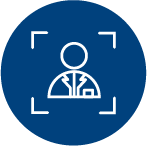Research in CHEO’s Department of Diagnostic Imaging focuses on the fusion of different modalities, such as MRI and ultrasound, with conventional and sophisticated new technology. The department is taking part in several exciting research studies, including the use of MR-Enterography in patients with Crohn’s disease and ulcerative colitis; the STOPP study, a Canada-wide study of the impact of corticosteroid treatment on bone health of children; innovative studies using functional MRI, DTI, and perfusion; and ultrasound studies of the liver, brain, and skull. The research brings together the department, new technologies, and health professionals from within CHEO, the University of Ottawa, and other Centres of Excellence from around the world.
Research Projects
-
Canadian Association of Radiologists White Paper on De-Identification of Medical Imaging: Part 1, General Principles
03/11/2020
The application of AI algorithms in radiology requires access to large data sets containing PHI. The CAR AI Ethical and Legal standing committee published Part 2 of this guide to provide a practical approach to de-identification in the context of the current Canadian health care landscape. This article discussed the practical application of protecting patient data in the reality of our current Canadian clinical landscape. The strengths and weaknesses of de-identification approaches were outlined, along with the complexities of protecting patients’ medical imaging data, the possible de-identification software tools available, some common mistakes made by research and development teams, and perspectives on future directions.
-
Tuberous sclerosis complex associated intracranial lesion found by antenatal ultrasound
22/04/2020
Though there are no reports of sensitivity of neurosonography for the antenatal detection of intracranial abnormalities associated with TSC, our case suggests that antenatal ultrasound could be used as a screening modality for antenatal diagnosis of TSC.
-
Toward Developing a Semiquantitative Whole Body-MRI Scoring for Juvenile Idiopathic Arthritis: Critical Appraisal of the State of the Art, Challenges, and Opportunities.
02/03/2020
-
Comparison of the diagnostic performance of the 2017 ACR TI-RADS guideline to the Kwak guideline in children with thyroid nodules
01/06/2019
Both the Kwak-TI-RADS and ACR TI-RADS guidelines provide moderate malignancy risk stratification for thyroid nodules in the pediatric population, with better inter-rater agreement for the ACR TI-RADS guideline. Further work to adjust the recommendations for pediatric patients is necessary.
-
Outcomes and risk factors of massive and submassive pulmonary embolism in children: a retrospective cohort study
08/03/2019
Massive or submassive pulmonary embolism led to higher rates of unfavourable outcomes than non-massive pulmonary embolism in children. Further adaptations of PESI and sPESI are required to improve their clinical usefulness in paediatric patients.
-
MRI features of the placenta in fetuses with and without CNS abnormalities
01/09/2018
The presence of fetal CNS abnormalities is associated with reduced ADC values of the placenta. Moreover, placentas of fetuses with CNS abnormalities show a less rapid increase in fetal to placental volume ratio with GA. Therefore, ADC mapping, as well as different growth kinetics of the placenta relative to the fetus, may potentially serve as early markers of pathological neurodevelopment.
-
Apparent Diffusion Coefficient of the Placenta in Twin versus Singleton Pregnancies
01/08/2018
The diffusion characteristics of twin placentas are similar to those of singleton placentas. ADC and rADC remain stable throughout pregnancy in twin and singleton placentas, reflecting stable extracellular water diffusion, despite changes associated with placental maturation.
-
Validation and refinement of a clinical decision rule for the use of computed tomography in children with minor head injury in the emergency department
01/07/2018
We sought to prospectively validate the accuracy and potential for refinement of a previously derived decision rule, Canadian Assessment of Tomography for Childhood Head injury (CATCH), to guide CT use in children with minor head injury.
-
Does 3T Fetal MRI Improve Image Resolution of Normal Brain Structures between 20 and 24 Weeks’ Gestational Age?
17/08/2017
Both magnets depict cerebral and facial normal anatomic structures; however, our data indicates better anatomic detail on the 3T than on the 1.5T magnet.
-
Synovial osteochondromatosis in a 14-year-old boy with a history of Legg-Calve-Perthes disease.
06/03/2017
Researchers
-
Kasim Abdulaziz
Investigator, CHEO Research Institute
-
Nadya Ben Fadel
Investigator, CHEO Research Institute
-
Sasha Carsen
Scientist, CHEO Research Institute
-
Kevin Cheung
Investigator, CHEO Research Institute
-
Khaled El Emam
Senior Scientist, CHEO Research Institute Professor, Faculty of Medicine, University of Ottawa
-
Kerri Highmore
Investigator, CHEO Research Institute
-
Andrée-Anne Ledoux
Scientist CHEO Research Institute
-
Elka Miller
Investigator, CHEO Research Institute
-
Martin Osmond
Emeritus Senior Scientist, CHEO Research Institute
-
Erick Sell
Investigator, CHEO Research Institute
-
Kevin Smit
Investigator, CHEO Research Institute
-
Nagwa Wilson
Investigator, CHEO Research Institute











